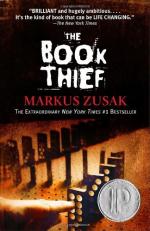|
This section contains 3,872 words (approx. 13 pages at 300 words per page) |

|
SOURCE: "Japan's New Generation of Writers," in World Literature Today, Vol. 62, No. 3, Summer, 1988, pp. 403-7.
In the following essay, Sakurai profiles four recent Japanese fiction writers.
In 1976 several young writers in their twenties won the coveted Akutagawa Prize for their starkly original novellas and astonished the literary community by ringing up phenomenal sales. Almost Transparent Blue by the art student Ryu Murakami reportedly sold a million copies within sixty days of its publication as a hardcover, setting a postwar record. By year's end some 1,400,000 copies of the slim, almost-transparent-blue volume had changed hands. Publications by other newcomers that year and the next also enjoyed near-record sales. The emergence of these young writers was a major event of 1976. Fiction in the preceding decade had been dominated by authors born in the 1920s and 1930s—among them Junnosuke Yoshiyuki (b. 1924), Kunio Tsuji (b. 1925), Saichi Maruya (b. 1925), and Kenzaburo Oe (b...
|
This section contains 3,872 words (approx. 13 pages at 300 words per page) |

|


